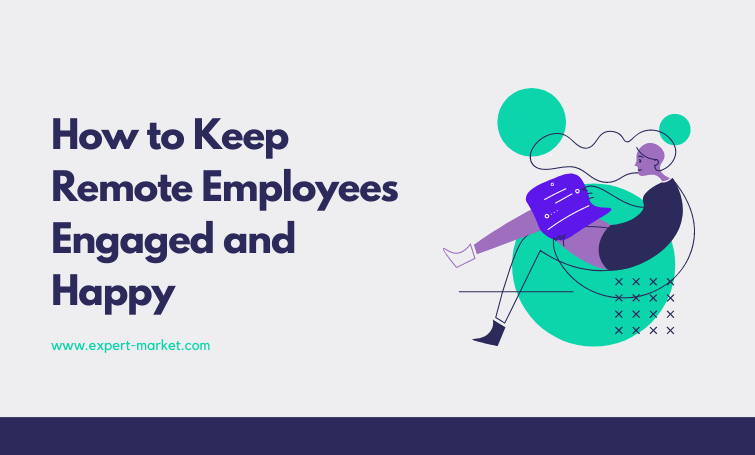Many statistics have been rolled out that say working from home enhances productivity and leads to a better workforce. It steers a better retention rate of employees and more satisfied, happier employees overall. Employees are jumping to the bandwagon of remote work more than ever. Times are changing, and a lot of statistics have already proved it.
Remote working benefits both employers and employees. When working remotely, employees tend to be more productive in whatever they do, are physically active, and enjoy a healthy work-life balance. They are also less distracted by anything else throughout their workday.
Amidst all these, a few employers worry that the communication between employees and the management will suffer. It may also leave employers in the dark. To get away from such worries, employers should manage remote employees and keep them happy and engaged to attain better results. If looking for some employee management solutions, you are at the right place. This article discusses a few tips that will help employers keep their employees engaged and happy.

A Chat Tool will Keep Everyone in the Loop
Communication is crucial when employers want to engage remote employees. When employers have proper communication with their employees, they fear that they are not working during business hours or are not working to their full potential.
Chat apps like Skype and Slack will help the team stay in regular communication. Engaging team members is a much smoother process with such tools that encourage back and forth communication between team members.
Allow Flexibility
Remote working offers an obvious perk of flexibility to the employees. Employees may have commitments in their personal life l, like pets, children, etc., and remote working helps them benefit significantly from a remote, flexible schedule. Remote workers have the flexibility of starting their days earlier or later, depending on their commitments, and it helps them stay more engaged throughout their day.
When employers understand remote employees’ schedules, they stay worry-free that they do not take the time out of the business hours to complete their chores.
Increase the Number of Calls and Video Meetings
Employers are of the wrong notion that in-person communication is more effective. Video conferencing will also help employers build a personal connection with their employees. Seeing the body language, physical responses, or reactions of their employees, employers get a clear idea of how well their employees understand the projects.
You can schedule video chats after client meetings to recap the outcome and plan of action. Regular calls at the end of the day, midday, or in the morning will help employees and employers stay connected and informed.
Offer Special Perks
Employees get to reap several benefits when they are physically present in the office. For instance, your office provides free coffee, a discounted/complimentary gym membership, occasional team lunches to celebrate great work, or any other event. Remote employees miss out on such perks. Hence, employers should consider offering them some perks that would work best for them.
A few of them include a communal WeWork office space where remote employees can meet and work, a stipend for a home office, or a discounted membership to a gym. This will feel them included by employers and engaged with their virtual office culture.
Offer More Responsibilities and Roles
One of the best ways to make employees feel more engaged with their team and offer integral responsibilities and roles. Remote employees can have the responsibility of organizing internal meetings, mid-weeks, and client recaps. It offers remote employees the opportunity to communicate with their coworkers. They also feel valued and vital to their roles. By delegating essential responsibilities to the remote employees, they will remain engaged and knowledgeable with the rest of their workforce.
Conclusion
Many employers complain that remote working creates disengaged employees, but there are several ways in which it can be remedied. Engaging remote employees is not a daunting process. When employers engage their remote employees, they make their employees happier and attain greater employee retention rates. Employers can also initiate remote employee engagement activities, as it is key to keep them happy, comfortable, and at ease. Keeping remote employees happy is crucial to ensure employee engagement.



























